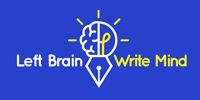Starbucks is internationally renowned for two things: the consistency of its beverages and the inevitable misspelling of customers’ names on their cups.
Starbucks spelling mistakes first went viral in 2013, when the #StarbucksFail hashtag gained traction on Instagram. #StarbucksFail spelling errors range from the honest mistake to the egregious, all of which live on in infamy on social media.
So close.
This begs the question: are flagrant #Starbucksfails accidental, or has Starbucks successfully executed a brilliant, under-the-radar strategy to receive free promotion through user-generated content (UGC)?
Though never confirmed, many conjecture the latter to be true. Ultimately, the origin of #StarbucksFail and the intent are irrelevant. Misspelled names are now so ubiquitous to the Starbucks experience it’s essentially part of the company’s brand.
With the #StarbucksFail UGC, Starbucks isn’t attempting to create or capitalize on a current trend. The hashtag is a popular post but not a viral sensation (for which time is usually the vaccination).
Even categorically successful UGC campaigns, such as Coca Cola’s “Share a Coke” or ALS’s “Ice Bucket Challenge,” have expiration dates. Eventually, the novelty wears off and new fads overtake the marketplace and public attention. Five years into #StarbucksFail, the most recent public Instagram to use that hashtag was posted 34 minutes before publishing this blog.
Starbucks is also soliciting UGC with the intent to turn earned media into owned media. Such ventures are more solicitous than #StarbucksFail, but they also have self-imposed expiration dates. The recently held “White Cup Contest,” sought new cup designs and a just-announced $10 million grant challenge for environmentally friendly cup designs are Starbucks latest forays into owned UGC.
Like or hate the coffee, Starbucks isn’t just in the coffee business anymore. It’s a UGC, social media marketing machine.
